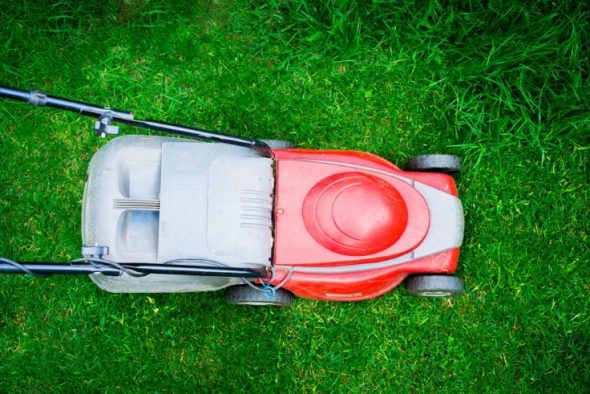Whenever you drive through a new neighborhood, you begin subconsciously (if not actively) looking for the nicest house on the block. Though you can’t see the interior décor from the comfort of your car, you can get a sense for the care and quality of the house by judging the front yard. Specifically, if there is a lush lawn out front, a lawn that is immaculately mowed and a luscious green color, you know that home’s a winner.
Yet, when you drive home to find your front lawn patchy and weed-ridden, overgrown in some spots and a sickly green-yellow in hue, you have little to be proud of. Fortunately, you can build up the curb appeal of your own home by fixing your front lawn – and it doesn’t take too much work, either.

Step One: Fix Patches
There is no point encouraging growth when your grass is dead in noticeable patches around your yard. Your first goal, therefore, is to determine why your grass is patchy and to do something to fix it.
Unfortunately, that’s easier said than done. Grass is a relatively finnicky plant; it goes dormant or dies in patches at even the slightest stress. For example, if grass doesn’t have the optimal amount of sunlight – e.g. there’s a big shade tree covering part of your front lawn for most of the day – it will most likely die. If that sounds like your problem, you can either cut down your shade tree or turn that shady area into a flower bed because your grass simply won’t grow there as-is.
Additionally, your grass won’t grow if the soil underneath it is too hard. If you and your family beat the same path across your lawn every day, you are tramping down debris, thatch and dirt and preventing your lawn from thriving. You can take an aerating tool – like cleats, a pitchfork or a roto-aerator – to poke holes in those regions to breathe new life into your lawn.
Finally, your grass could be suffering the worst problem of all: pests and disease. All sorts of bugs and fungus take every chance they get to live and breed in your lawn, but some species slowly kill the grass they call home. You can most often detect bugs by sticking your face close to your lawn and looking for worms, grubs and other creepy crawlies. Lawn diseases too have symptoms that you can discern if you look close enough: pinkish or grayish tinges, patterns of dead patches, white spots on blades, etc. In either case, you need to identify the exact culprit and spray the right kind of pest or fungicide before you can begin regrowing your grass.
Step Two: Improve Growth
Finally, when you are certain that the patch-causing problem is resolved, you can begin the repair process. Start by overseeding your lawn – or hiring someone else to do it. This will facilitate the growth of healthy, new blades everywhere but especially in the dead patches where you need a fresh start. Of course, if your patches are too vast, you might want to invest in new sod, which will take less time and effort to get looking verdant and envy-worthy.
Then, you need to get in the habit of feeding and watering your lawn properly. Grass needs fertilizer at least twice a year, but the largest, greenest, thickest lawns are fed as often as twice a season. You can split the difference with four feedings: in early spring, late spring, summer and fall. However, because you are trying to accomplish different types of growth with different feedings, you can’t use the same Fertilizer Supply for each application. Before you buy the biggest bulk fertilizer you can find, you should learn about fertilizer numbers and invest in the right formula for your lawn.
When it comes to water, your lawn needs at least an inch and a half every week, even in winter when it goes dormant. To achieve this, you should put in an automated sprinkler system and set it to turn on in the mid-morning. At this time of day, the sun isn’t hot enough to evaporate all the water spread over your lawn, but it won’t allow the water to sit in pools that attract bugs and drown the blades, either. You can also contact a mosquito service company to treat your yard and prevent a mosquito infestation.
Last but not least, you need to learn how to mow your lawn using riding lawn mowers. Though you might be tempted to avoid pulling out the lawn mower until your grass looks shaggy and overgrown, doing so increases the likelihood that your lawn will become stressed. You should be removing less than a third of each blade with each mowing, which in most places means mowing once per week. And, you should be doing so with razor-sharp mowing blades, which facilitate healing and reduce the likelihood of disease. You may also hire a residential lawn mowing company for expert lawn mowing services.
Step Three: Decorate
Once your lawn is looking healthy, you should draw attention to it with the right decorations and landscaping. Highlight the greenness with bright red flowers around the borders or stick some handsome gnomes in the center. After all the work it took to get the best lawn in the neighborhood, you deserve to show off.
Image Credits: Front Lawn from karamysh/Shutterstock



